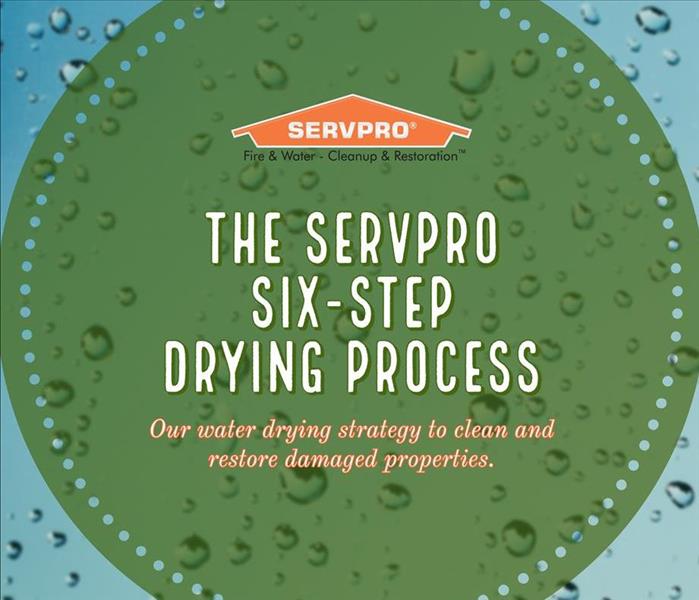Our Six-Step Drying Process
5/5/2021 (Permalink)
When North Dakotans are confronted with water damage, SERVPRO is the most trusted cleaning and restoration company in the state. This is due, in part, to our Six-Step Recovery Process used to ensure a property is completely dried and restored after suffering from water damage. Whether it is from broken pipes, sewer backups, or appliance leaks, we use the same process to ensure quality results.
Step 1: Emergency Contact
The first step is when we get the call. Whether it is directly from the property owner or from an Insurance professional, we get all of the details needed to begin our response. This includes details about the loss, contact and address information, and what has been affected by the damage. This gives our team the best idea of what equipment and specially trained technicians to send to begin response.
Step 2: Inspection and Damage Assessment
Once the call has been received, an inspection will be scheduled and SERVPRO technicians will be sent to assess the damage and begin work if approved by the property owner and their insurance. In most cases, a property owners insurance policy will cover initial services to mitigate damage, such as water extraction and removal, this means that technicians can begin work immediately without needing to get an estimate approved by the insurance provider.
Step 3: Water Removal/Water Extraction
The water process begins with packing out any materials to prevent further damage. This could be furniture or boxed items, or anything that can be moved to help our technicians best begin water removal.
Once items have been removed, powerful pumps and truck-mounted extraction wands are used to remove any existing water. This powerful suction technology will remove most of the moisture from affected flooring, making the drying process go quicker and smoother.
Step 4: Drying and Dehumidification
Once the excess water has been removed, the floors and walls may appear dry, but a quick inspection will reveal they are wet to the touch. Nearly all building materials, like wood, drywall, and flooring materials, are porous and therefore retain water. This retained water can cause the materials to break down, warp, or cause mold damage.
Using commercial grade dehumidifiers and high-volume air movers, we begin drying out the area while monitoring the progress with handheld moisture meters. For most jobs, the drying process will be complete within 1-3 days, depending on size and amount of moisture in the materials. After drying is complete, the final repairs can be scheduled and made.
Step 5: Cleaning and Repair
After drying is finished, cleaning and repair takes place. This varies from job to job but could involve cleaning off affected contents such as clothes, furniture, or other belongings. Additionally, for water damage, the area is cleaned and sanitized with special anti-microbial agents to prevent mold growth. Additionally, deodorizing might take place if there is a smell left over from the damage.
When stopping water damage, this can mean cutting into walls to stop further damage or to remove wet materials. After the area has been dried out, any left-over debris is removed and documented for the restoration repairs.
Step 6: Restoration
The final step in our recovery process is the restoration. While we try to save as much of the existing property as possible, oftentimes some things are unsalvageable. In these cases, our build-back department works with your insurance provider to restore the property to the condition it was in prior to the loss.
This can be as simple as replacing damage carpet or as extensive as a complete tear down and reconstruction of the damaged area. Whether it is a complete bathroom reconstruction or a simple wall replacement, we work with the insurance provider every step of the way to get approvals based on existing policies to get a seamless restoration completed.






 24/7 Emergency Service
24/7 Emergency Service
